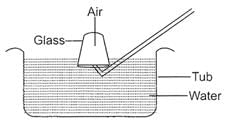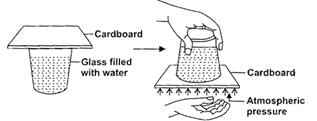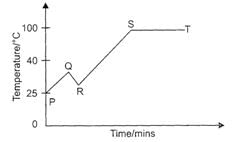Test: Natural Resources - 2 - UPSC MCQ
10 Questions MCQ Test - Test: Natural Resources - 2
Study the given figure carefully. What will happen to the water level in the tub when some air is sucked out of the glass?


Fossil fuels formed over a long period of time when heat and pressure were applied to
Which of these is the most accurate description of air, based on the pie-chart?


Select the option that groups rocks of two different kinds as shown in the box.
Sandstone : Pumice
Beena performed an experiment in which she took four beakers containing different amounts of water at different temperatures. She added equal amount of salt into each beaker.

Identify the beaker in which salt takes the shortest time to dissolve.
Take a glass and fill it with water up to the brim. Make sure that there are no air bubbles. Take a thick, stiff piece of cardboard and put it over the glass. Place your hand over the card and quickly turn the glass upside down. Now slowly remove your hand.

Q. What does this experiment show?
Monty fully filled a glass bottle with water, put a stopper on it and placed it upright in the freezer overnight. When he looked at it in the morning, the stopper was out of the bottle and a column of ice had emerged through the opening of the bottle.
Q. Which one of the following is the best explanation for what Monty had observed?
The U-tube shown below is immersed in ice water. X and Y are the red ink droplets present inside the tube.

Q. What will you observe after some time?
The graph below shows the temperature of a beaker of water as it is subjected to various treatments.

Q. What could have taken place at point Q?














